SS Kroonland Archival Collection
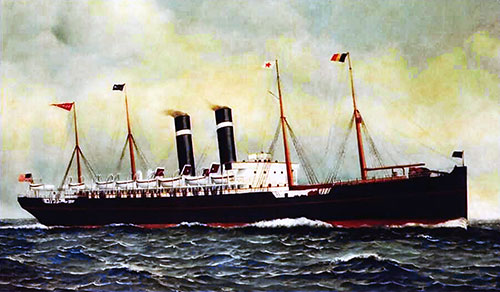
SS Kroonland, Oil on Canvas Painting by Antonia Jacobsen, 1903. | GGA Image ID # 1deabf66dc
Content Links
- SS Kroonland, Oil on Canvas Painting by Antonia Jacobsen, 1903 (Top)
- Kroonland (1902) Red Star Line Ship's History (Brief)
- Passenger Lists
- Menus
- Sailing Schedules
- Photographs
- Postcards
- SS Kroonland, Largest Vessel Built in the US - 1902
- Red Star Line New York—Dover—Antwerp Service - 1908
- Videos
Kroonland (1902) Red Star Line
Built by Wm. Cramp & Sons Shipbuilding & Engineering Co., Philadelphia, Pa. Tonnage: 12,760. Dimensions: 560' X 60' (577' o.l.). Twin-screw, 15 knots. Triple expansion engines. Four masts and two funnels. Passengers (1902): 342 First, 194 Second, and 626 Third Class. Passengers (1919): 242 First, 310 Second, and 876 Third Class. Service: In various North Atlantic services, including the Antwerp-New York route. In 1925, The SS Kroonland was placed in New York – Panama Canal – San Francisco service until a landslide temporarily closed the canal to navigation. WW1 Service: During World War I, the ship served as United States Army transport USAT Kroonland through April 1918, and as the Navy auxiliary USS Kroonland (ID-1541) from April 1918 to October 1919. Post WW1 Service: Transferred to Panama-Pacific Line in 1923. Fate: The ship was sold and scrapped at Genoa in 1927. Sister ships: Finland, Vaderland and Zeeland. Awards: The SS Kroonland was one of ten ships that came to the aid of the burning liner SS Volturno in the mid-Atlantic in October 1913. Despite stormy seas, Kroonland was able to take aboard 89 survivors, for which captain and crew received accolades that included U.S. Congressional Gold Medals.
The SS Kroonland was the SS Finland's sister ship, built around 1902 by William Cramp & Sons of Philadelphia.
She sailed for International Mercantile Marine's Red Star, American Line, and Panama Pacific Line. According to The New York Times, SS Kroonland became the first ship to issue a wireless distress call at sea when she radioed for help during a storm in 1903. When the outbreak of World War I in August 1914 disrupted service to Belgium, Kroonland shifted to alternate routes. After the United States entered World War I, the ship served in United States Army and the Navy. SS Kroonland made multiple trips between the U.S. and France, carrying nearly 38,000 troops for the U.S. Army and Navy. The liner resumed North Atlantic service in April 1920, remaining there until she was sold and scrapped at Genoa in 1927.
Passenger Lists
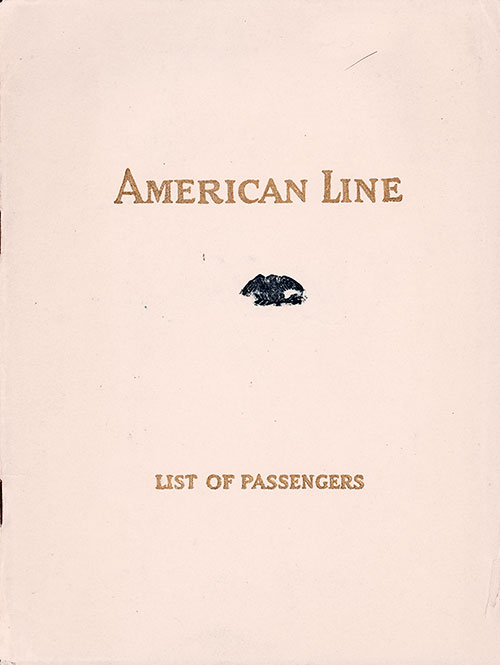
1923-06-21 SS Kroonland Passenger List
Cabin Class Passenger List from the SS Kroonland of the American Line, Departing 21 June 1923 from New York to Hamburg via Plymouth and Cherbourg, Commanded by Captain William J. Munro, Lt. Cdr., USNRF.
Return to Content Links
Menus
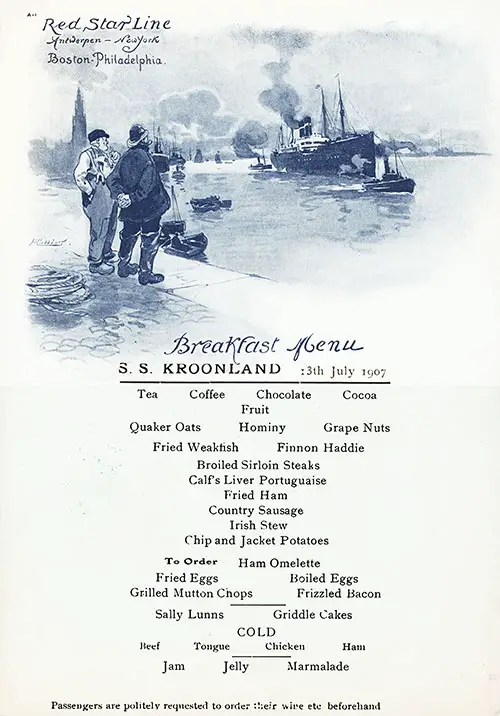
1907-07-13 SS Kroonland Breakfast Menu Card
Vintage Breakfast Menu Card from 13 July 1907 on board the SS Kroonland of the Red Star Line featured Broiled Sirloin Steaks, Country Sausage, and Fried Eggs.
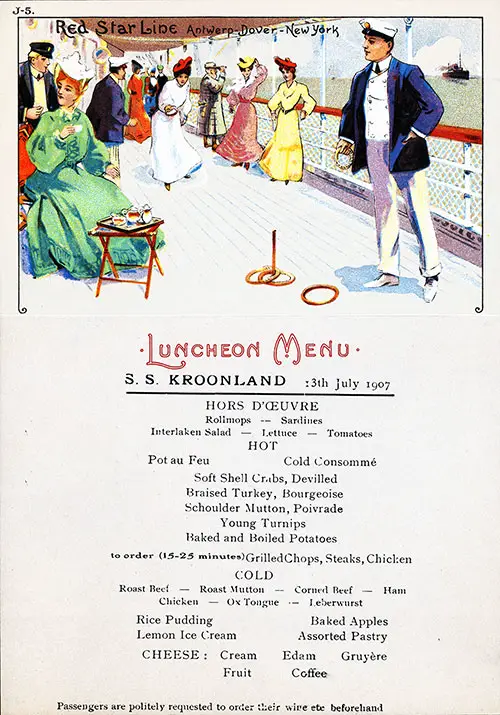
1907-07-13 SS Kroonland Luncheon Menu Card
Vintage Luncheon Menu Card from 13 July 1907 on Board the SS Kroonland of the Red Star Line Featured PrimaryEntre, SecondaryEntre, and FeaturedDessert for Dessert.
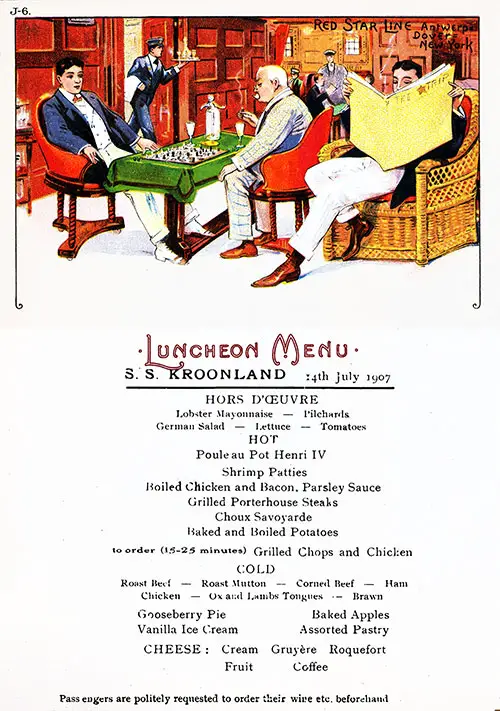
1907-07-14 SS Kroonland Luncheon Menu Card
Vintage Luncheon Menu Card from 14 July 1907 on Board the SS Kroonland of the Red Star Line Featured Poule au Pot Henry Iv, Grilled Porterhouse Steaks, and Gooseberry Pie for Dessert.

1907-07-14 SS Kroonland Dinner Menu Card
Vintage Dinner Menu Card from 14 July 1907 on Board the SS Kroonland of the Line featured Prime Ribs Beef, Stuffed Green Peppers, Glazed Ham, Madere with Epinards à la Crème, and Soufflé of Apples for Dessert.
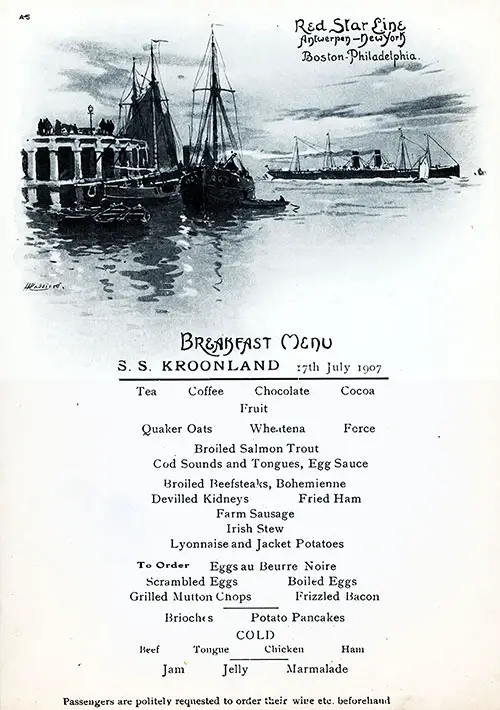
1907-07-17 SS Kroonland Breakfast Menu Card
Vintage Breakfast Menu Card from 17 July 1907 on board the SS Kroonland of the Red Star Line featured Broiled Salmon Trout, Farm Sausage, and Scrambled Eggs.
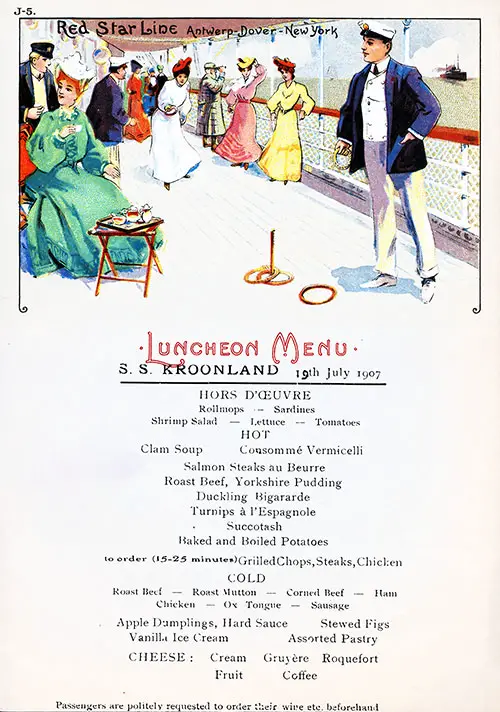
1907-07-19 SS Kroonland Luncheon Menu Card
Vintage Luncheon Menu Card from 19 July 1907 on Board the SS Kroonland of the Red Star Line Featured Salmon Steaks au Beurre, Roast Beef, Yorkshire Pudding, and Vanilla Ice Cream for Dessert.
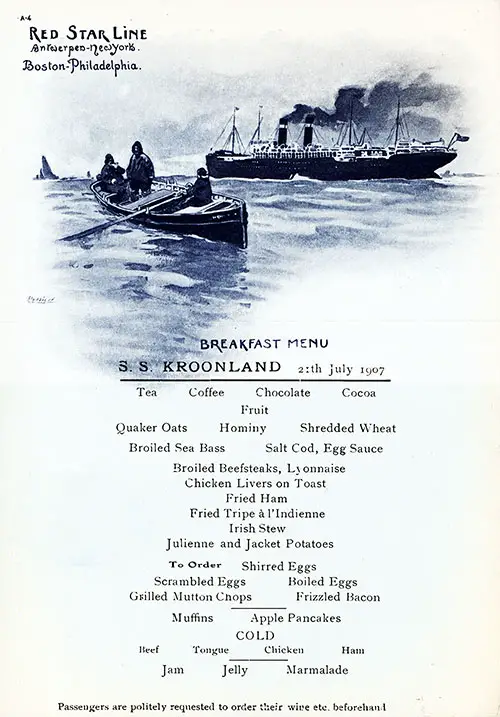
1907-07-21 SS Kroonland Breakfast Menu Card
Vintage Breakfast Menu Card from 21 July 1907 on board the SS Kroonland of the Red Star Line featured Broiled Sea Bass, Fried Ham, and Boiled Eggs.
Return to Content Links
Sailing Schedules
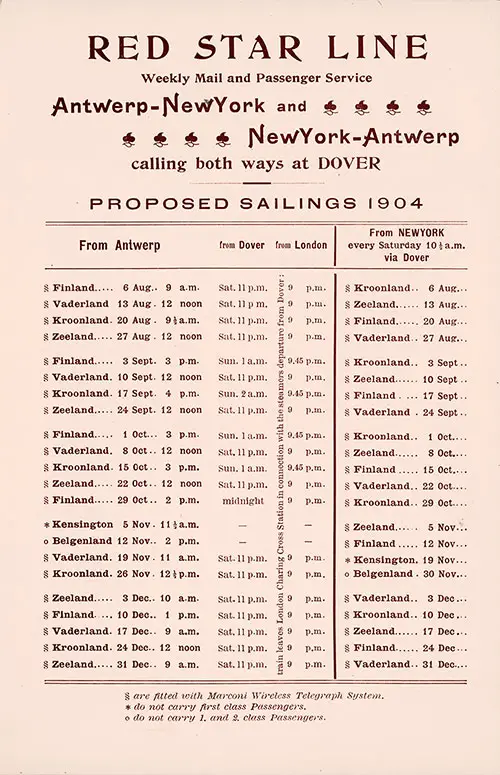
Proposed Sailings Antwerp-Dover-New York from 6 August 1904 to 31 December 1904. Ships Include the Belgenland, Finland, Kensington, Kroonland, Vaderland, and Zeeland. SS Vaderland Passenger List, 13 August 1904. | GGA Image ID # 1df144fda2
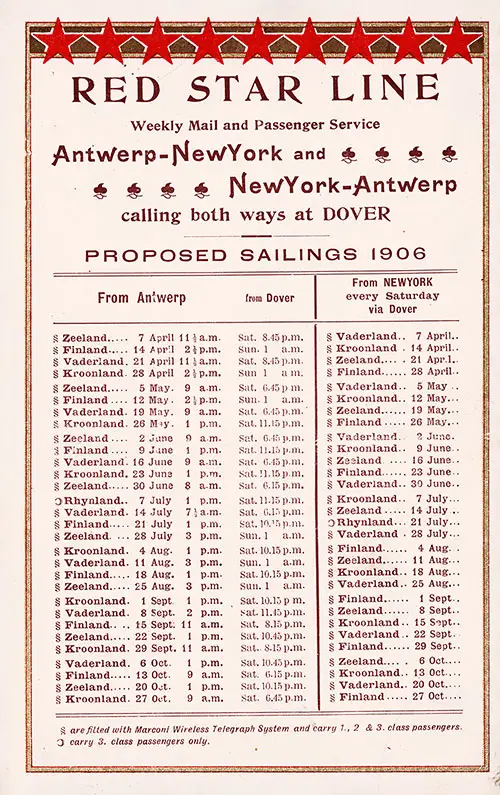
Proposed Sailings, Antwerp-Dover-New York, from 7 April 1906 to 27 October 1906. Ships Include the Finland, Kroonland, Rhynland, Vaderland, and Zeeland. SS Finland Passenger List, 12 May 1906. | GGA Image ID # 1df16fa6ef

Proposed Sailings, Antwerp-Dover-New York, from 4 April 1908 to 31 October 1908. Ships Include the Finland, Gothland, Kroonland, Vaderland, and Zeeland. SS Zeeland Passenger List, 8 August 1908. | GGA Image ID # 1df1a872b3
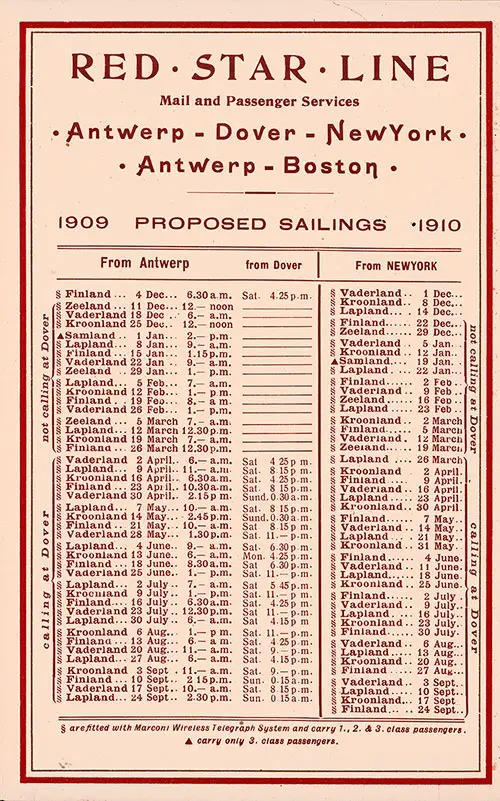
Sailing Schedule, Antwerp-Dover-New York, from 4 December 1909 to 24 September 1910. Ships Included the Finland, Kroonland, Lapland, Samland, Vaderland, and Zeeland. SS Lapland Passenger List, 27 August 1910. | GGA Image ID # 1ebde48726
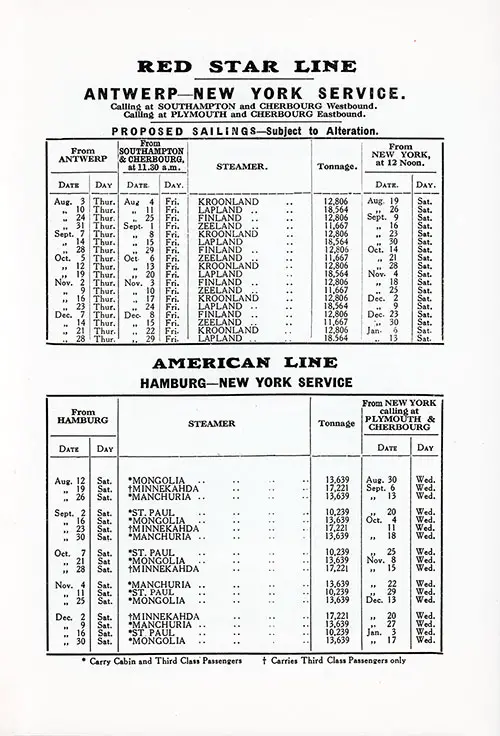
Proposed Sailings. Red Star Line: Antwerp-New York Service from 3 August 1922 to 13 January 1923. American Line: Hamburg-New York Service from 12 August 1922 to 17 January 1923. Ships Included the Red Star Line Finland, Kroonland, Lapland, and Zeeland. Ships for the American Line Manchuria, Minnekahda, Mongolia, and St. Paul. RMS Majestic Passenger List, 6 September 1922. | GGA Image ID # 1dd525c9ba
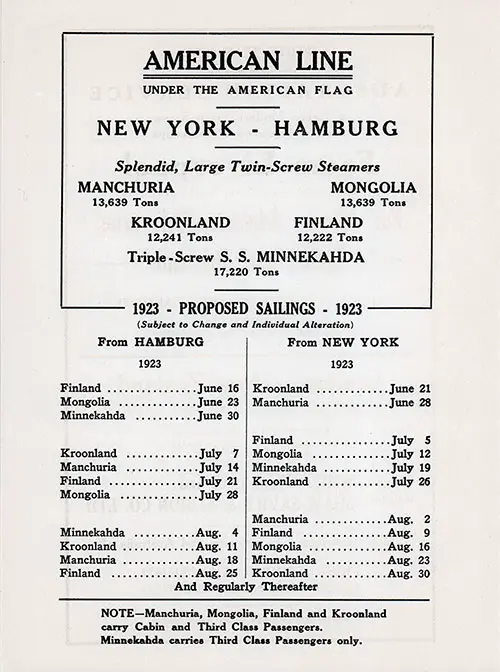
1923 Proposed Sailings from 16 June 1923 to 30 August 1923 for the American Line. Ships Listed Included the Finland, Kroonland, Manchuria, Minnekahda, and Mongolia. Note: Manchuria, Mongolia, Finland and Kroonland Carry Cabin and Third Class Passengers. Minnekahda Carries Third Class Passengers Only. SS Kroonland Passenger List, 21 June 1923. | GGA Image ID # 163142707e
Return to Content Links
Photographs
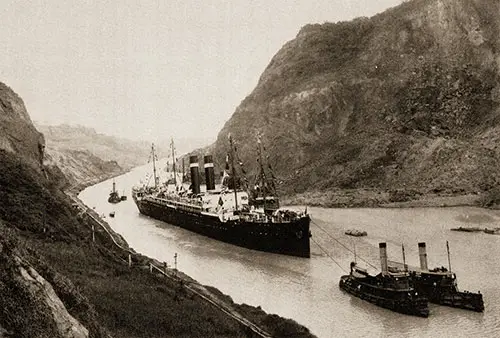
SS Kroonland in the Culebra Cut of the Panama Canal, Passing Cucaracha Slide on 1 February 1915, on Her South American Cruise. As an American Flagship, She Was Never Taken by the British Ministry of War Transport. | GGA Image ID # 1deab34cdf
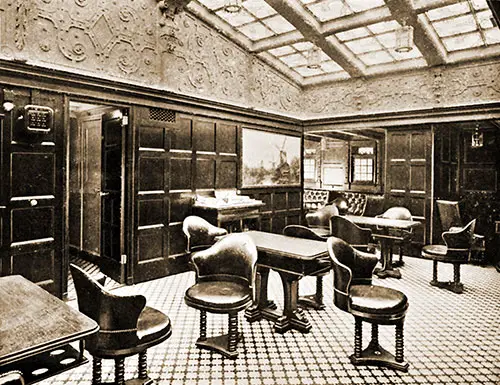
First Class Smoking Room on the SS Kroonland of the Red Star Line, circa 1909. | GGA Image ID # 1dec047099
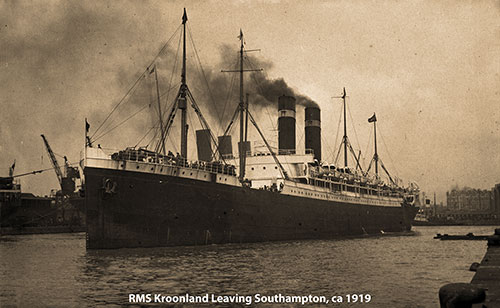
RMS Kroonland Leaving Southampton, circa 1919. | GGA Image ID # 1dec3b13c4
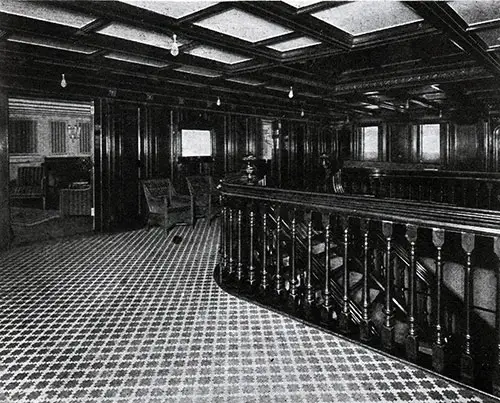
First Class Entrance Hall. Finland, Kroonland, Vaderland, and Zeeland. About Antwerp and the Red Star Line, 1904. | GGA Image ID # 11da4bdf57
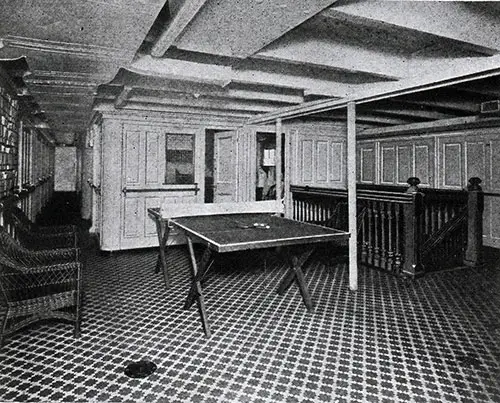
View of the Upper Deck Landing. Finland, Kroonland, Vaderland, and Zeeland. About Antwerp and the Red Star Line, 1904. | GGA Image ID # 11da5547d7
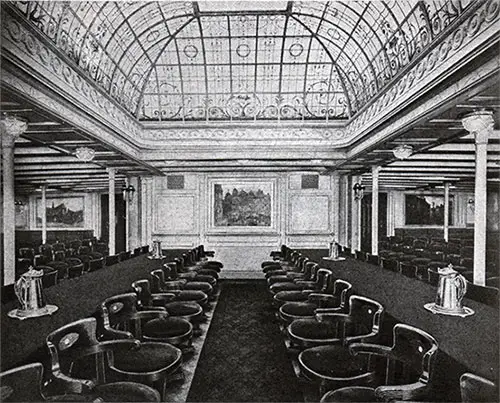
First Class Dining Saloon. Finland, Kroonland, Vaderland, and Zeeland. About Antwerp and the Red Star Line, 1904. | GGA Image ID # 11da5693b9
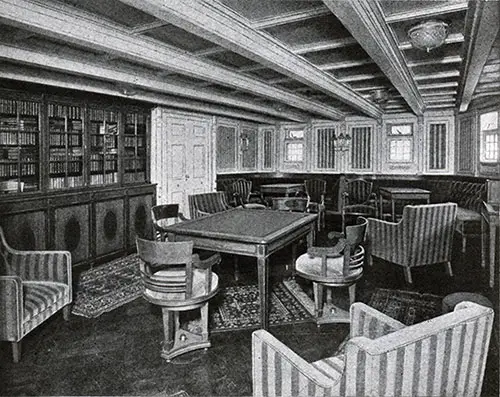
The First Class Library. Finland, Kroonland, Vaderland, and Zeeland. About Antwerp and the Red Star Line, 1904. | GGA Image ID # 11da9a2b48
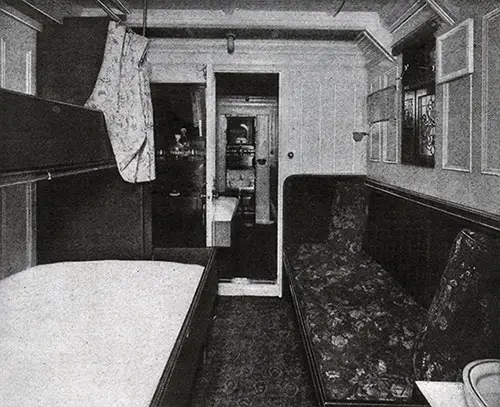
Promenade Deck Suites. Finland, Kroonland, Vaderland, and Zeeland. About Antwerp and the Red Star Line, 1904. | GGA Image ID # 11dab9ea41
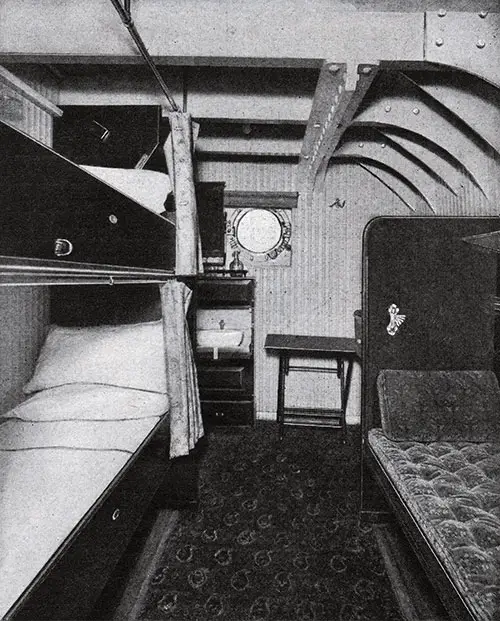
Upper Deck Stateroom. Finland, Kroonland, Vaderland, and Zeeland. About Antwerp and the Red Star Line, 1904. | GGA Image ID # 11daf15fcf
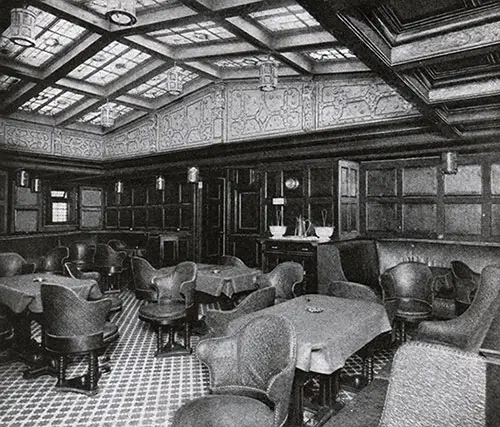
First Class Smoking Room. Finland, Kroonland, Vaderland, and Zeeland. About Antwerp and the Red Star Line, 1904. | GGA Image ID # 11db614d11
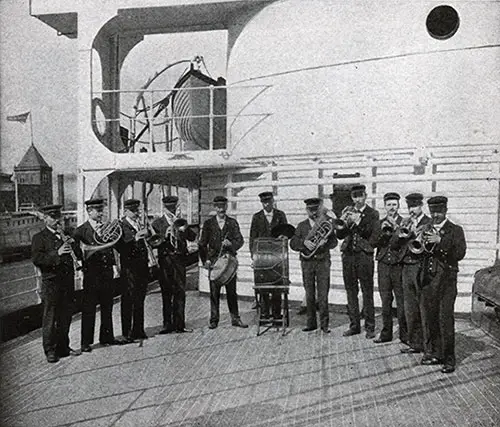
The Typical Ship's Band. Finland, Kroonland, Vaderland, and Zeeland. About Antwerp and the Red Star Line, 1904. | GGA Image ID # 11db7e477e
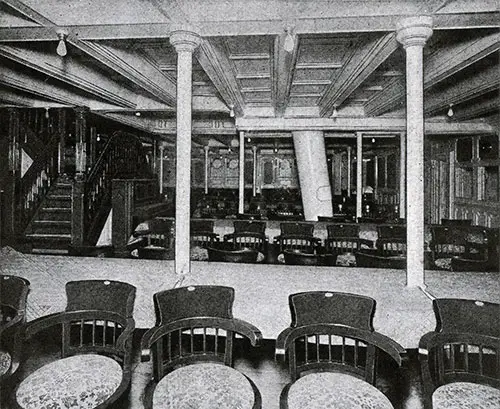
Second Class Dining Saloon. Finland, Kroonland, Vaderland, and Zeeland. About Antwerp and the Red Star Line, 1904. | GGA Image ID # 11dbbc5fdb
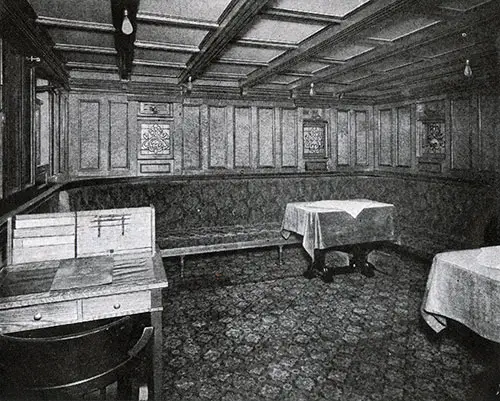
Second Class Ladies' Room. Finland, Kroonland, Vaderland, and Zeeland. About Antwerp and the Red Star Line, 1904. | GGA Image ID # 11dbd04120
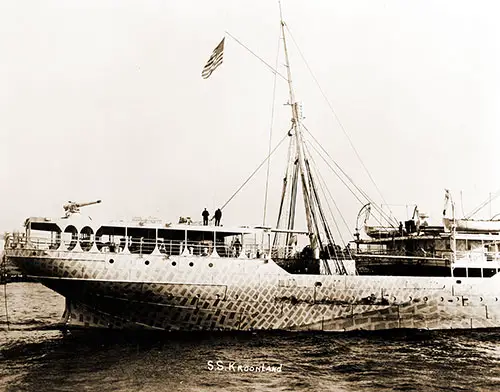
The SS Kroonland in Camouflage Paint During WWI. View of the Ship's After Portion, Starboard Side, in November 1917. She Is Painted in Mackay System Low-Visibility Camouflage and Has a Gun Mounted Atop Her After Deckhouse. This Ship Served as USS Kroonland (ID # 1541) From 1918-1919. Courtesy of the International Mercantile Marine Company. U.S. Naval History and Heritage Command Photograph NH 52092. | GGA Image ID # 1e0249355a
Return to Content Links
Postcards
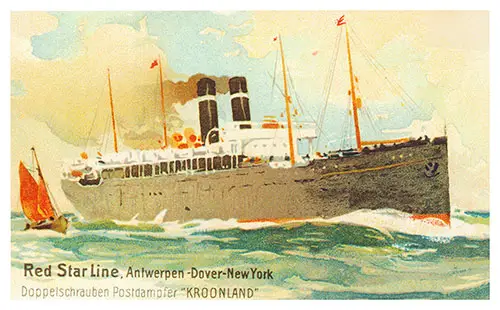
Colorized Postcard of the SS Kroonland (1902) of the Red Star Line. The Ships' Route was Antwerp-Dover-New York. | GGA Image ID # 1dea97ff31
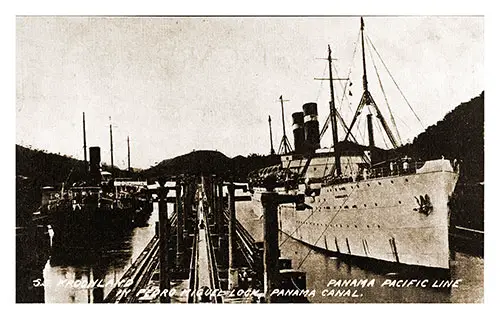
Postcard of the SS Kroonland of the Panama Pacific Line in the Pedro Miguel Lock of the Panama Canal. Postally Unused. No Date, but circa 1923-1927. | GGA Image ID # 1dec085d58
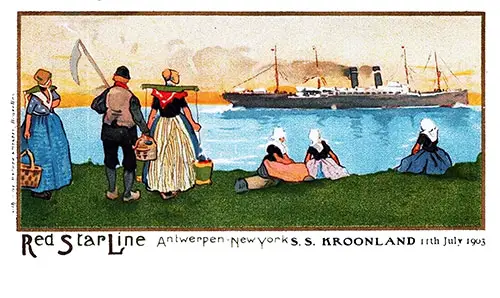
Red Star Line SS Kroonland, Antwerp-New York, 11 July 1903. Dutch People Watch the Ship as it Passes through the Water from the Shoreline. | GGA Image ID # 1dec335d9c
Return to Content Links
Excerpts from Information for Passengers
The Bar opens at 8 a. m., and closes at 11 p. m.
Lights are extinguished in the Saloon at 11 p. m., Lounge and Library at 11.30 p. m. and Smoke Room at 11.30 p. m.
Divine Service in the Saloon on Sunday at 10.30 a. m.
VALUABLES. The particular attention of passengers is drawn to the ticket conditions regarding the carriage and custody of articles specified in Section 4281 of the revised Statutes of the United States, but passengers can, and are accordingly advised to, protect themselves by insurance. The Line has provided a safe in the office of the Purser in which passengers may deposit money, jewels, ornaments, documents or other valuables for safe keeping and a deposit receipt will be issued by the Purser.
SEATS AT TABLE. Passengers who have not previously arranged for seats at table to be reserved should apply for same to the Second Steward.
SMOKING. Passengers are kindly requested not to smoke in the Dining Saloon or Staterooms.
ALL INQUIRIES for information of a general character should be made at the Purser's Office.
LETTERS, CABLES AND TELEGRAMS for dispatch should be handed to the Saloon Steward only, from whom also Postage Stamps can be obtained. Mail for passengers will also be distributed by the Saloon Steward. Passengers are requested to obtain a receipt from the Saloon Steward when making payment for the dispatching of cablegrams or wireless messages. No adjustment can be made unless such a receipt is obtained.
LETTERS, ETC., FOR PASSENGERS will be brought on board before the passengers land. Passengers should personally ascertain whether there is any mail for them before disembarking, and they are invited to leave their addresses at the Purser's Office for later dispatches to be re-directed.
DECK CHAIRS AND STEAMER RUGS. Can be hired upon application to the Purser, at $1.50 each for the voyage.
THE SURGEON is authorized to make customary charges, subject in each case to the approval of the Commander, for treating passengers at their request for any illness not originating on the voyage. In the case of sickness developed on the voyage no charge will be made, and medicine will be provided free in all circumstances.
BAGGAGE. On disembarking passengers are specially requested to claim their baggage before leaving the Customs shed.
PASSENGERS are requested to ask for a receipt on the Company's Form for any additional Passage Money, Chair Hire, or freight paid on board.
TRAVELERS CHECKS, payable in all parts of Europe, can be purchased at all the principal offices of the American Line. These Checks are accepted on board American Line steamers in payment of accounts, but the Pursers do not carry funds to enable them to cash same.
IMPORTANT NOTICE TO PASSENGERS
Passengers are warned not to offer gratuities of any kind to German Custom Inspectors, which will be considered a bribe by the German Authorities and passengers are liable to severe punishment on account of corruption.
WIRELESS TELEGRAM
This Steamer is equipped with the Independent Wireless Telegraph Company's system of Wireless Telegraphy and also with Submarine Signaling Apparatus.
The cable system of counting will be observed, and all words in the address, text and signature are counted and charged for. All radiograms must be prepaid.
PASSENGER CLASSES CARRIED
Manchuria, Mongolia, Finland and Kroonland carry Cabin and Third-Class Passengers.
Minnekahda carries Third Class Passengers only.
Source: SS Kroonland Passenger List -- 21 June 1923
Return to Content Links
SS Kroonland, Largest Vessel Built in the US - 1902
PHILADELPHIA, Feb. 20.—The new steamship Kroonland was launched at Cramps' Shipyard this afternoon. The tallow on the ways had frozen, and the Kroonland stuck to such an extent that it was necessary to use powerful hydraulic jacks to slide her into the water.
The launching of the SS Kroonland was informal. Only a few invitations and these were verbal, were issued. Mrs. R. G. Griscom named the ship. The commander and officers have not been selected as yet.
The Kroonland is .of the same type as the SS Vaderland and SS Zeeland and is a sister ship to the SS Finland, in the course of construction at Cramps'. She is 5S0 feet long, twenty-six feet longer than the SS St. Louis or SS St. Paul, and has a register of 12,000 tons, or 400 tons more than the SS St. Louis or St. Paul.
Her contract speed is seventeen knots an hour. She possesses every device for the safety and comfort of passengers. She carries the latest improved | appliances for the protection of life. Except for the one point of speed, the Kroonland is the equal of the finest steamship afloat. It will enable persons of moderate means to enjoy all the luxuries of the fastest ocean greyhounds.
Passengers will be carried on three decks, the promenade, the upper, and the saloon deck. Among the numerous distinct advantages offered is the location in the midship of all first and second-cabin saloons and staterooms, where motion is minimal.
For lighting and ventilation, in addition to the numerous sidelights, there is a vast trunk well extending through two tiers of decks, tastefully decorated and lighted through a richly ornamented glass roof.
All the rooms are enormous, excellently lit, and ventilated by the same process as on the SS St. Louis and the SS St. Paul. In cold weather, this air is heated by passing over steam pipes. The heat thus supplied may be regulated for each deck independently.
The interior rooms, which in many vessels are sometimes so dark as to require artificial light, are in thèse lighted from overhead by oval glasses, sufficiently large to give ample light. For extra illumination, electric lights are provided. All of these rooms are finished in mahogany.
The steerage quarters are commodious and well-ventilated. Everything possible has been done to make the music room and library attractive. The smoking room for first-class passengers is paneled in American oak. and has all the latest appointments and conveniences. The description of the first cabin staterooms will nearly serve the second cabin, the fittings being almost identical.
The vessel is the largest built thus' far in the United States. There are berths for 343 first-class passengers, 104 second-class, and about 1,000 third-class. The arrangements for loading and discharging cargo are complete. She was designed especially for the New York-Antwerp service of the International Navigation Company.
"Huge Steamship Launched," in the New York Times, 21 February 1902.
Return to Content Links
Red Star Line New York—Dover—Antwerp Service - 1908
Antwerp, the busy seaport of Belgium—and, in fact, one of the world's leading ports — was chosen as the terminus of the Red Star Line owing to its central geographic position. This city has the most complete and direct railroad and steamship connections, not alone with all parts of Europe but with the world generally.
Travelers intending to visit the Continent will find Antwerp a most advantageous point to commence their tour, as numerous fast trains leave there daily for Brussels, Paris, Cologne, Munich, Dresden, Berlin, Vienna, Swiss points, Italy, etc.
At Dover, the English port of call for the Red Star Line, passengers land at the Prince of Wales Pier, from which trains convey them to the center of London within two hours. At Antwerp, the steamers are also brought alongside the Company's new and commodious piers, within a short distance of the top hotels and railway stations. A new steamer is under construction for this service.
The Steamships SS Finland, SS Kroonland, SS Vaderland and SS Zeeland
The New York-Dover-Antwerp service of the Red Star Line is now maintained by four of the entire Atlantic fleet's newest, staunchest, and finest steamships. The SS Finland and SS Kroonland are the latest acquisitions; both fly the American flag, having been built recently at the famous shipyards of the Wm. Cramp & Sons Shipbuilding & Engine Company of Philadelphia.
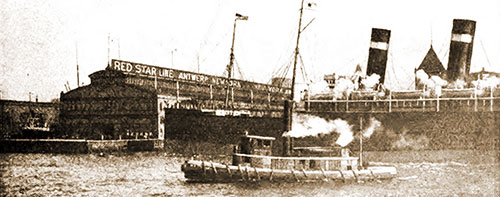
A Red Star Liner (SS Finland, SS Kroonland, SS Vaderland, or SS Zeeland) Arrives at the Piers in New York. Facts for Travelers, 1908. | GGA Image ID # 1dec671213
They are prototypes of their sister ships, the SS Vaderland and SS Zeeland, constructed by John Brown & Co., Ltd., of Glasgow, Scotland.
All four are twin-screw steamers, providing security against breakdowns, and, except in the one point of speed, are the equal of any ships afloat.
Constructed on the same general plan and modeled for safety and steadiness (a noteworthy feature of these ships being their remarkable breadth of beam and depth in comparison to their length), their general dimensions are also similar: Length, 580 feet; breadth of beam, GO feet; gross tonnage. 12,760 tons.
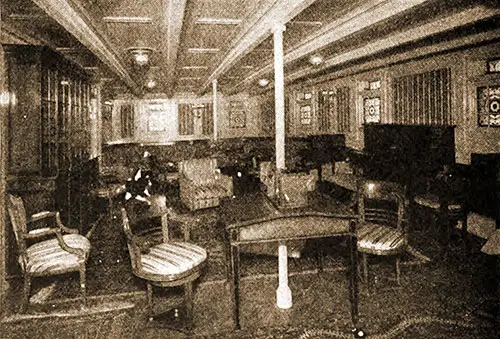
Library and Reading Room on the SS Finland, SS Kroonland, SS Vaderland, or SS Zeeland. | GGA Image ID # 1decba956f
This type of ship, on account of lines and general weight distribution, is wonderfully safe and steady in a sea-way. Passengers traveling by this route are, as a rule, entirely free from seasickness, which too often mars the pleasure of an ocean voyage. These new and popular steamers are practically unsinkable, divided by water-tight bulkheads into twelve compartments.
Throughout every department, they exceed the requirements of Lloyds and Bureau Veritas. They are accorded the highest rating of the British and American registries. A perfect ventilation system ensures a pure, sweet, and wholesome atmosphere throughout—a most important matter which has received the utmost attention.
Utilizing powerful Sturtevant blowers on the boat deck, fresh air is constantly supplied to all parts of the ship. This current is passed over a system of steam pipes in cold weather. The heat provided thus may be regulated for each deck independently and by the occupant of each stateroom to suit his comfort.
This eliminates steam pipes or radiators from staterooms and contributes much to general comfort. These steamships are equipped with the Marconi wireless telegraph system, which enables passengers to attend to essential business details or exchange greetings with friends separated hundreds of miles.
This means that the day's news from both sides of the ocean is made known. The steamers are lighted throughout by electricity, and a complete system of electric bells brings all parts of the ship into communication.
At the same time, the steering gear is controlled by a telemotor from the wheelhouse on the navigation bridge. Large storerooms permit the carrying of extensive supplies of fresh provisions, meats, and vegetables, being kept in excellent condition during the voyage by special refrigerating plants.
A ship's engine room is always a matter of wonder to the passenger. There is hardly an indication of these ships' location because of the almost complete absence of vibration. This feature appeals to all voyagers who know how disagreeable and nerve-racking it is to the constant quivering and shaking of a vessel propelled by old engines.
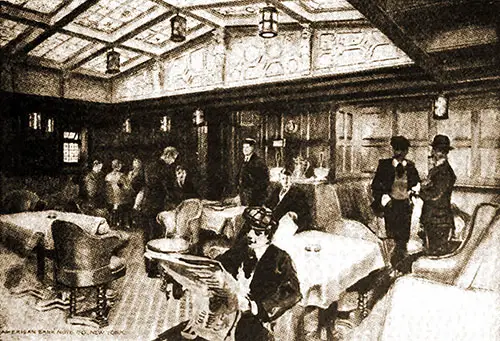
First Class Smoking Room on the SS Finland, SS Kroonland, SS Vaderland, or SS Zeeland. | GGA Image ID # 1decd11135
Technically the engines of the Red Star Line steamers are of the quadruple expansion, direct-acting, and surface condensing type. Steam is generated in eight of the latest style of boilers, each boiler having four furnaces, making thirty-two in all.
The boilers occupy two compartments leading into two great funnels, each ninety feet high and elliptical in shape, being 13 feet 6 inches by 8 feet 6 inches. The immense shafts are of Siemens-Martin steel, and the twin propellers are manganese bronze.
Passengers are carried on three decks—promenade, upper, and saloon. On the promenade deck are spacious staterooms of inviting comfort, fitted with extension berths, folding tables, and other conveniences. Beautiful brocade curtains adorn these cabins.
Among the first-class staterooms are included four special suites, each consisting of two rooms—either of which can be used as a bedroom or sitting room—with a lobby between, each cabin communicating with a private bathroom and toilet, fitted with clean porcelain bathtubs.
The large square windows in these cabins are equipped with sliding shades of decorative glass. As the promenade deck is so high above the water that no swell or spray can reach it, the windows can be left open in almost any weather.
All staterooms on these ships are unusually large, handsomely appointed, and ventilated by the Sturtevant system already described, scrupulous neatness being everywhere apparent.
All these rooms are finished in mahogany, and the interior rooms, which on most ships depend entirely on artificial light, are, in rare instances, lighted from overhead through the oval, corrugated glass. Electric lights are also available night or day.
The public rooms on all Red Star Line steamers are splendid apartments. Still, a description of one ship will suffice for all, as these four steamers are alike in all essentials, equally beautiful, and superbly furnished.
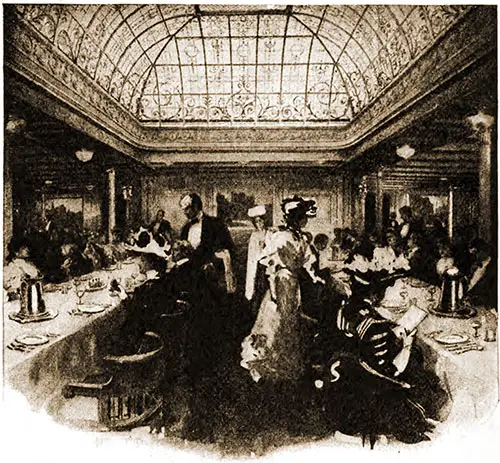
First Class Dining Room on the SS Finland, SS Kroonland, SS Vaderland, or SS Zeeland. | GGA Image ID # 1decf32e5f
Let us, for instance, look at the SS Vaderland:— Paneled with oak and richly carved, the entrance hall on the SS Vaderland is relieved of the somberness usually noticeable in interiors of rich finish by a massive gilt grill, fitted to an overhead skylight, which floods the corridor with light.
Beneath this grill winds the companionway leading to the main saloon. At the same time, directly forward of the entrance hall, one catches a glimpse of a most daintily furnished music room and library—a vista of Nile green sofas and divans, spindly chairs, the gloss of satinwood, and the sheen of curly maple tables exquisitely inlaid with rich woods of a darker tone.
Descending the stairway, one enters the dining saloon, a spacious, handsome apartment stretching the entire width of the beamy vessel, amidship. On the sides, alcove tables give a pleasant suggestion of coziness and seclusion.
The seats are covered with rose-colored moquette, and the upholstery throughout is in excellent keeping with the color scheme of the other decorative materials.
The woodwork is finished in lustrous white, the sheen of its glossy enamel reflecting the soft light of silver candelabra and the glow of electric lights which stud the ceiling in pendants of opalescent glass.
Six oil paintings of merit, representing scenes in Belgium and Holland, help to panel the room and blend in tone with the bright-hued sliding shutters, which screen in a varicolored glass the big air ports.
The furniture is of mahogany, except the sideboards, which are of satinwood, handsomely inlaid. Architect and decorator have done much to render pleasing the music room and library—one in the selection of location, the other in adornment.
The room itself is finished in white enamel, with panels of striped silk upholstery, and the windows are fitted with cloisonne glass panels, which give a pleasing effect either by day or night.
There are also a beautifully designed piano and bookcase, as well as convenient writing tables of inlaid satinwood. A striking feature of the apartment is the elliptical contour of its forward end, which is an unobstructed view ahead, much frequented by passengers who love to note the vessel's progress or the ever-changing scene from such a point of vantage.
The smoking room for first-class passengers is paneled in fumed American oak, and the chairs and couches are handsomely finished in leather. Small tables for card parties are also provided. Underfoot is a floor of rubber tiling, which affords an excellent foothold, while overhead is a broad ventilating skylight.
The general tone of high-grade fittings also extends throughout the entire second-class space. It is particularly noticeable in the saloon, a richly furnished apartment that extends the whole width of the ship like the first-class dining saloon.
Aft of the saloon is located staterooms for seventy-six voyagers in second class, and after the end of the promenade deck, which is also reserved for second-class passengers, is a deckhouse containing the entrance hall and the ladies' room.
This apartment is finished in mahogany, the bright patterns of the ceiling matching in tone the panels of tulip and satinwood with which the walls are decorated. The furniture is mahogany, and carpets, cushions, and curtains are in varying shades of one color, giving a very pleasing effect.
The second-class smoking room on the promenade deck is enormous, filled with deep, leather-upholstered chairs and seats, tables for cards, and has every convenience for smokers.
Music on deck and in the dining saloon, provided by a string and brass orchestra, is a nice feature of the Red Star Line steamers.
During the summer, dances are held frequently on the immaculate decks, the appropriate decorations—flags and colored electric lights—lending gayety to the scene.
The third-class quarters are commodious and well-ventilated. Families are berthed in rooms containing two, four, and six berths, and all the quarters have well-lighted dining rooms with tables and revolving chair seats. The berths are galvanized iron frames with woven wire springs.
International Mercantile Marine Company, "Red Star Line: New York-Dover-Antwerp Service," in Facts for Travelers: Atlantic Transport Line, American Line, Dominion Line, Leyland Line, Red Star Line, and White Star Line, 1908, pp. 41-46.
Return to Content Links
Videos
SS Kroonland, Red Star Line, George Fisher Band. 2:32 Total Time. Video Produced by Ballins Dampfer Welt. Combines Period Background Music with Photographs, Postcards and Other Ephemera Created About the SS Kroonland.
Return to Content Links
